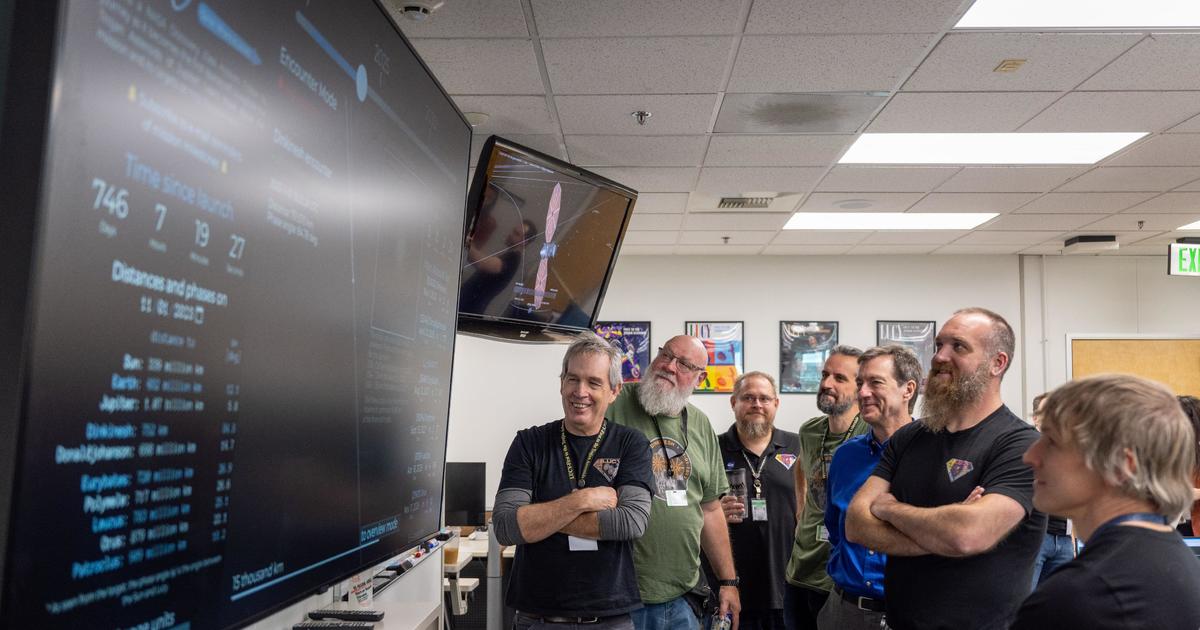

NASA's Lucy spacecraft has successfully completed its first high-speed flyby of a main-belt asteroid, a significant milestone in its ambitious 12-year journey to explore Jupiter's Trojan asteroids. After a nail-biting period of silence, the spacecraft "phoned home," transmitting data confirming the successful encounter with the asteroid Dinkinesh (informally known as 1999 VD57). This flyby, executed on November 1, 2023, marked a crucial test of Lucy's navigation and observation capabilities, proving its readiness for the far more challenging encounters with the Trojans that await. The close approach to Dinkinesh, occurring at a relative speed of approximately 16,000 miles per hour, presented a unique technological hurdle. The speed and short duration of the flyby required precise timing and rapid data acquisition. Mission controllers at NASA's Goddard Space Flight Center anxiously awaited the signal, a testament to the inherent risks involved in deep-space exploration. The successful reception of the signal—a confirmation of the spacecraft’s health and the collection of valuable scientific data—was met with relief and celebration. The data collected during the flyby will provide crucial insights into the composition and characteristics of this main-belt asteroid. While Dinkinesh is not a Trojan asteroid, its proximity to the spacecraft’s trajectory made it a valuable practice target. Studying Dinkinesh allows scientists to refine their understanding of asteroid formation and evolution, knowledge that will inform their interpretation of the data gathered from the Trojan asteroids later in the mission. The images and spectroscopic data acquired are expected to reveal details about Dinkinesh’s surface features, mineralogy, and potential internal structure. The successful Dinkinesh flyby demonstrates the robustness and precision of Lucy’s navigation system and its scientific instruments. This successful test run boosts confidence in the mission's ability to achieve its primary goals: to explore the Trojan asteroids, remnants from the early solar system that hold vital clues to the formation of our planetary system. The data from Dinkinesh serves as a crucial calibration point, enhancing the accuracy and scientific value of the data that will be collected from the Trojan asteroids in the coming years. Lucy’s journey continues, and with this successful first encounter in the books, the mission is poised for further groundbreaking discoveries.

A spacecraft exploring an asteroid belt successfully "phoned home" to NASA after a high-speed asteroid encounter on Wednesday.
The spacecraft, named , has a primary mission of exploring Jupiter's , a series of asteroids trapped in the gas giant's orbit. The new high-speed encounter was with a small main belt asteroid that NASA called Dinkinesh, which is "10 to 100 times smaller" than the Trojan asteroids. The flyby served as an in-flight test of Lucy's "terminal tracking system," NASA said in a .
Based on information sent to NASA when Lucy "phoned home," the spacecraft is considered to be "in good health" and has been commanded to start relaying data obtained during the encounter to researchers. This process will take about a week, NASA said in a , and will show how Lucy performed during the encounter.
NASA said that the spacecraft likely passed the asteroid at about 10,000 miles per hour. During this time, the spacecraft's tracking system was supposed to "actively monitor the location" of the small asteroid and move autonomously to make those observations.
Multiple features on the spacecraft were meant to be activated during the encounter, including a high-resolution camera that took a series of images every 15 seconds while passing close by the asteroid. A color imager and an infrared spectrometer were also meant to be activated. Lucy also is equipped with thermal infrared instruments that are not made to observe an asteroid as small as Dinkinesh, NASA said, but researchers are interested in seeing if the tools were able to detect the asteroid anyway.
Even as Lucy moves away from the asteroid, data will still be collected, with the spacecraft using some of its tools to "periodically" observe Dinkinesh for another four days.
into space in 2021 on a 12-year mission to explore eight asteroids.
after the 3.2 million-year-old skeletal remains of a human ancestor found in Ethiopia, which got its name from the 1967 Beatles song "Lucy in the Sky with Diamonds." That prompted NASA to launch the spacecraft into space with band members' lyrics and other luminaries' words of wisdom imprinted on a plaque, the Associated Press . The spacecraft also carried a disc made of lab-grown diamonds for one of its science instruments.





